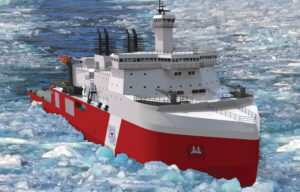
The Coast Guard recently delivered a fleet mix analysis to Congress that show it needs eight to nine polar icebreakers to fulfill its missions in the Arctic and Antarctic regions, a senior service official said on Wednesday. The mix of icebreakers would consist of four or five heavy Polar Security Cutters (PSCs) and four or five medium Arctic Security Cutters, which “have shallower drafts and can get into tighter spaces and shallower areas,” Vice Adm. Peter Gautier, deputy commandant for…

 By
By 











